MUSIC MEETING FESTIVAL (MMF) 2024 Nijmegen

MMF is known as a festival focusing on world music with a certain openness to jazz and improv music. It is happening at Pentecost weekend in May in the Dutch city of Nijmegen /nime;xn/ at the Dutch-German border. It runs parallel with the known moersfestival nearby on the German side of the border. Before reflecting/commenting on musical performances we got immersed in, here first a few framing notes.
Open intercultural field
MMF describes its focus of representation as “all kinds of music in which (…) cultural narratives resonate in whatever innovative, cross-over, genre-expanding, interdisciplinary or just close-to-origin manner it is made wherever on the globe.” It comprises different forms of ethnically based music from traditional playing styles to blends into varieties of pop- and rock music or transformations through improvisational strategies as well as syntheses with classical music. Considering that ultimately all music has its origins in folk music resulting from different ways of transformational practice and migrational blends, we are confronted with an open and highly interactional open field transgressing ethnic zones as well as making those more recognisable and accessible.

Music is by definition a flowing, wandering entity that is connecting with ‘other’ music, adapting, enriching, transforming, dominating or even destroying it in different ways of appropriating. It is nothing specific for ‘world music’. It’s an eternal property and quality and not something that just began in the ‘mixing’ era where everything can goes/mixes with everything instantly. ’Mixing’ is new metaphor derived from a big technical leap caused by digitalised infinite storing and reproduction of music as well as connected modes of perceiving and listening to music. The ‘mixing’ metaphor obscures a bit the processes of blending diverse influences active in all kinds of music at all times.
Secret gardens
Experiencing that kind of music means prima facie experience human emotions, memory and interchange with nature in different new and surprising or also strange ways. It means that we are confronted with different maybe unknown musical idioms and ways of music making transferring other ways of emotional representation, celebration and suffering. It can be experienced as ‘the exotic’, as the ‘transgressing’, as ‘entering the unknown’, as ‘loosing yourself in secret gardens’, as ‘letting yourself carry to undiscovered zones of the human soul’, to ‘extended body movement experience’ or to ‘higher rhythmic awareness’ etc.. These are all extending, feeding, discovering, enjoying, liberating, celebrating, unifying qualities depending on the interaction of qualities of the presented music as well as attitude and focus of the audience.
Contextualisation
Music from other cultures are bound to specific ways and modes of performing. That contextualisation can be part of mundane or spiritual rituals under specific time and space conditions that are different from an ordinary concert hall or on an open-air stage presentation. Both situations, concert hall and open-air stage, have their own hidden ritualistic function that opens up (and restricts) own ways of experiencing, which also may allow to get an idea, a feeling of the original ritualistic happening.
Time of war(s)
After ww 2, war was never absent. It is part of human condition and influences our daily life in more or less heavy ways, in more direct or indirect ways, on conscious and much more unconscious level. War is shaking up our emotions and feelings in the deepest way.
At the moment two of the raging wars came quite close by leaving no one unmoved on a daily basis, the war in Ukraine and the genocidal displacement, uprooting, starvation and slaughtering of Palestinian people in Gaza. The Ukrainian conflict left its constructive cultural traces in the festival, the Palestine conflict (as on many other festivals) not. That should change in the future for obvious reasons of expression.
Dialogical mirroring
Due to the dialogic mirroring built into the text, this is a polytonal review of a different kind, born from a collaboration between music writer Henning Bolte and Slovenian writer/poet Stanka Hrastelj. Looking/listening from different perspectives and experiences brought into dialogue, should enrich the externalisation of the multidimensional listening experience.
Highlights
Among the concerts attended and experienced, the following four were standing out for us:

Monica Akihary interviewing Yousra Mansur and Brice Bottin (Bab L’Bluz)
Bab L’Bluz
A creation of a new blend performed with outstanding energy and high street credibility.

Ali Doğan Gönültaş
Ali Dogan Gönültas
A multilingual, poly-cultural awareness in historical perspective and highly expressive and moving way.
 Maryana Golovchenko
Maryana Golovchenko
Maryana Golovchenko
Arranging multidisciplinary tableaus with process oriented re-creation of folk sources and traditions.

Vincent Courtois, Theo Ceccaldi, Hélène Duret, Daniel Erdmann, Robert Lucaciu and Eva Klesse
Therapie de Couple
An astonishing neat bicultural collaboration on high creative performance-level.
In the first three cases folk music sources are the (direct) basis and are re-shaped and re-created in different ways: in perspective of genre blend and cultural variety as well as strengthening re-invention in multidisciplinary format.
Appearances of Maryana Golovchenko
"Artist-in-residence", vocalist Maryana Golovchenko from Amsterdam delivered three concerts in three different trios:

- a collaboration with the duo of vocalist Kateryna Kravchenko and vibraphonist Arthur Clees presenting Ukrainian poetry and folk tales.
- a concert with her trio SonCe of cellist Pau Sola Masafrets and multi-instrumentalist Cengiz Arslanpay based on Ukrainian folk music sources
- a cinematographic concert with violinist Anna Antipova and pianist Kateryna Ziabliuk on the Parajanov film work “Shadows of Forgotten Ancestors”
In her first appearance she played with the duo of vocalist Kateryna Kravchenko and vibraphonist Arthur Clees. Golovchenko and Kravchenko both originate from Ukraine while Clees is originating from Luxemburg. They set Ukrainian poetry on music in their own contemporary way.
The combination voice and vibraphone has its forerunners in the duo of Jeanne Lee and Gunter Hampel, Ingrid Sertso and Karl Berger as well as Peter Rühmkorf and Wolfgang Schlüter. While those artists pioneered in developing free forms of expression, the three young musicians worked on re-shaping older poems and stories by using contemporary musical means from a diversity of genres. They put them into a new bed of performative flow thereby generating a new echo from sources of the past. Golovchenko used assorted old folk instruments and created a space of mutual illumination (of old and new) strongly feeding imagination. Clees enhanced the varied voice qualities of Kravchenko by the floating and evaporating vibraphone sounds.
Stanka Hrastelj: I came to the Music Meeting without prior knowledge of individual groups and musicians. I wanted to simply indulge in individual events, open up to the unexpected. This very first concert surprised me as it added an imaginative storytelling dimension to the music itself. The trio devoted itself to several performance layers: the musicians built a solid foundation in the tradition of Ukrainian folk songs and upgraded it with modernity. They devoted themselves precisely to the natural sounds of their instruments among which many little original folk instruments, to articulation of the language sound, the melody of the used Ukrainian poetry and the unfolding of the vocals that travelled in different directions. While listening, a scenery of pastures, shepherds with their whistles and bells, forest fairies bathing, a bell from a nearby chapel, a wedding procession, joyful shouts over ripe grain surfaced up in my imagination. The two voices supported and strengthened each other in their different qualities. The vibraphone was a bit off from the voices’ rich interplay.
Henning Bolte: yes, i think it could have been used more as a red thread marking the travel through time by and with the songs.
Stanka Hrastelj: Now the space and sound it generated, felt a bit too outside of the field of forces activated by the vocalists.

Pau Sola Masafrets
With her trio SonCe comprising cellist Pau Sola Masafrets and multi-instrumentalist Cengiz Arslanpay playing duduk, ney, kaval and zurna as well as using modular synthesizer, Maryana Golovchenko brought her/the trio’s very own re-invented/recreated version of Ukrainian folk songs. None of these three musicians are classical folk musicians. As part of the Dutch improv-scene they filter, rebuild, recreate and amplify the Ukrainian folk sources from their respective Ukrainian, Catalonian and Turkish background. In their approach, the sources gained an extra expressive load and transcultural impact, for instance in Golovchenko’s joyfully ululating voice in the Ukrainian wedding song. It was a good form of in-process music.

Cengiz Arslanpay
Stanka Hrastelj: Maryana Golovchenko proved to have at her disposal a clear and gripping vision about performance on site in terms of architecture and dynamics, which made it strongly spot on. Her fluent way of shifting between foreground and background made it all very rich and gripping. It also opened space for Masafrets to emphasize the physical qualities of his instrument (by a chain) and his injection of a birdsong trio by playfully juggling three sampling devices. The same goes up for Arslanpay’s airy fairy sampling and his playful poetic synthesizer fumbling.
Most impressing of the appearances was the third one, elevating and celebrating Paradjanov’s poetic cinematography from the past. While the moving pictures, sometimes in its dynamics creatively blurred, had no chronological story line, but highlighted moments of subjective inner experiencing alternating with mystical imagery of a higher spiritual layer, the musicians succeeded, to let emerge a significant narrative, taking shape and get it deeply embossed in beholder’s soul.

Forgotten Ancestors (Maryana Golovchenko, Kateryna Ziabliuk, Anna Antipova)
Stanka Hrastelj: it was much more than just a new soundtrack by this famous film work from the past. It was a collage of footage from Paradjanov’s movie, landscape pictures and the celebrating music created by the trio in honour to the magical moving pictures. The three musicians made something up from diverse elements that stayed with you. They showed great mutual understanding, great rapport in their playing thereby drawing the audience deep into the unfolding music and generated a gentle and beautiful work of art of their/its own.
In all three cases Golovchenko constituted a strong and very own way of transforming and revitalising sources from the past in moving manner. It was a very worthy ‘in-process’ type of music (making).
Appearances of Aviva Endean

Bass clarinettist Aviva Endean from Melbourne was the other artist in residence. She brought in different performance formats with unusual sound worlds and strong audience participation. We could experience two of those, the Hear Muffs and Intimate Sound Immersion we both attended.
Henning Bolte: I know Aviva Endean as an extraordinary musician, improviser and sound experimenter from a couple of performances with the HAND TO EARTH ensemble comprising the two Aboriginal artists Daniel and David Wilfred, vocalist Sunny Kim and trumpeter Peter Knight, all connected to the Australian Art Orchestra.
Intimate Sound Immersion was a tailor-made musical meeting for just one listener during 15 minutes - a 1 to 1 situation between musical live performer and an individual listener. By entrance Endean blindfolded you and led you to the place of action. It lead to a loss of space orientation and on the other hand to an intensified listening to the sounds generated by Endean coming from different angles in the space. It was proof of the mutual definition of space through sound and sound through space.
Henning Bolte: Loss of the visual dimension thwarted the usual way of perception and caused you to reconstruct a provisional unity of sound and space by own imagination. It triggers a deeply rooted instinct of human beings to locate new or strange sounds in the course of hazard detection and prevention. Here it was about opening up for new sounds and be your own director in giving them weight, place, significance and meaning.
Stanka Hrastelj: In Aviva Endean’s one-on-one performance you were enabled to perceive even more things that are closely related to performing/receiving music, but you are usually not aware of them. The initiation into the event, when you followed Aviva's leadership blindfolded, was interesting. You had to trust her, surrender to her guidance. The relationship (and hierarchy) between the musician and the listener became a confidential partnership. Since you couldn't rely on other senses except hearing, the physical side came out all the more. You become attentive to how you accept things with your whole body – how you feel the space (the movement of air in the room), how, in addition to the sounds of musical instruments, you hear breathing, footsteps and other countless micro-sounds that otherwise are below your active level of perception. For example, you guess what’s the size and shape of the instrument you hear. You also follow the sound when the musician puts down or leans the instrument against different materials; you follow how pleasant (or uncomfortable) you are when someone enters your circle of intimacy, touches you. And - last but not least - you also become aware of your body, your breathing and your postures. It was a very interesting (physical) experience that undoubtedly expands the field of musical and sound perception.
Diverse appearances through the days
A lot of concerts couldn’t be attended and hence cannot be reviewed. In the following you’ll find a choice of reviews of attended concerts (not in chronological order of taking place).
Ali Dogan Gönültas


Kurdish artist Ali Dogan Gönültas is an exceptional musician and stunning vocalist - something in between Jeff Buckley and Charles Aznavourian. His firm high voice and his lively rhythm permeated singing hit fully and affects intensely immediately. It harbours traces of pain even as zest for life and its celebration. He charms, conjures, dances, moves nimble as a weasel, celebrates, touches your ear, sets in motion your body and soul. Accompanied by the great percussion of Ali Kutlutürk, and the clarinet of Firat Çakilci it perked up listeners’ mood and kept them on a high level of sensing strength and experiencing happiness.
He sang in the regional languages Karmana, Kirdaski, Armenian, Turkish, and in Zazalu, his mother tongue. These languages were/are spoken in his birthplace Kigi in Anatolia. The songs were recorded on his album “Kigi”, which is a personal look on 150 years of local/regional music making. During the concert he talked about these multilingual realities, its challenges in life and for him as a musician and thereby enlivened the context and origin of the music (making). It revealed in a beautiful way the the cultural and linguistic diversity of Anatolia.
Naamu
Naamu is a nine piece group of young Dutch electric bassist Teun Creemers with four Malian vocalists and three percussionists playing a fusion of jazz with Malian folk music that he calls Malinke Groove Jazz. On the African musical site the hunter lute ngoni plays an important role in this music. One of the first using the ngoni in jazz was trumpeter Don Cherry 50 years ago. I will ever remember the piece “Mumakata” on the first album of the famous CODONA trilogy of Collin Walcott, Don Cherry and Nana Vasconcelos that starts with calling out /namu/, an expression from Bambara, the indigenous language of Mali, signalling incentive hearing involvement in the music. Creemers brought us with his European-West African ensemble into a certain Malian sphere. It was a nice colourful beginning with a special groove.
Henning Bolte: The Naamu concert unmistakably had something of a West-African stamp to it, especially due to the four Malian vocalists. Personally, I was missing a loosely swaying interlocking on a deeper level. it was quite tight and also had little space for Jesse Schilderink’s saxophone. It was less rich in its polyphonic qualities than on the recording.
Bab L’Bluz

Yousra Mansour
Pumping up the volume level to full does not automatically lead to heavier forceful fire and burning power. More is necessary to strike up and ascent. In the case of Bab L’Bluz it totally makes sense and it kicks the bricks. At MMF Yousra Mansour was striking up inexhaustibly ultimate energy and joy from within to within with her group comprising Brice Bottin, Ibrahim Terkemany and Jérôme Bartolome, according to the adagio “follow the spiral, and find your centre. Move and whirl, head bang and hair whip, into a place that is out there and deep within, an altered state where minds open, boundaries fall away and trust — in values, principles, ourselves — is rediscovered, made real.” This impetus of its latest album “Swaken” was transported and celebrated in full force in their NMM appearance.
Coming out of the Nayda (youth) movement, Mansour sings in Moroccan Arabic variant Darija, musically taking inspiration with her band - founded in Marrakech in 2018 comprising Brice Bottin, Ibrahim Terkmany and Jérôme Bartolome - from Gnawa music and its adaptation by rocking forerunners as Nass El-Ghiwane and singing in uncensored manner about current hot topics as “inheritance laws, gender wage disparities and rising cases of suicide and depression while calling for unity, tolerance and kindness in an increasingly fragile world.” Mansour succeeds in creating this energetic arc, making its cathartic quality intensely experienceable (even when you do not understand the lyrics). Her melismatic voice in its rough fervent purity and her musical leadership is a stroke of luck.


Ibrahim Terkemany, Brice Bottin, Yousra Mansour
The group’s Maghrebian music based on the dry vibrating bass lute guimbri together with other traditional instruments as Peul flutes, metal qraqeb castanets ,became more electrified and shod more and more shod on rock and its propelling energy when they started to play and tour big halls and open-air stages. It’s a reversal and answer to the “No Quarter” album of Robert Plant and Jimmy Page recorded in the early Nineties on the Djemma el Fna square of Marrakech. Clearly Bab L’ Bluz reaches now much further on a high level.
Stanka Hrastelj: With many words of profiling the background or not, Bab L’Bluz was head and shoulders above everything else this first day and maybe the other days too. What talents, what energy! A group of perfectly tuned exceptional musicians who give 120 percent of themselves on stage.
Henning Bolte: It is an interesting case of ‘export’ and ‘re-import’ of music. Rock is derived from blues, which derives from West-African music. Also Gnawa music is derived from Black African music of West-Africa. To refer to funk and rock in this context - as the program text does - without further ado as ‘Western music’ is a bit obfuscating.
Sarab
From a broader area-wise perspective with strong brass, electric guitar and keyboard sound, Sarab built up its forceful wall of sound, in interplay driven and permeated by Climène Zarkan's strongly piercing voice. It generated an immersive and embracing ocean of sound zooming in and out with Zarkan’s Arabic singing in between the waves, alternating between high flaring up bursts and soft, contemplative moments.
Sarab’s music unfolded against heavy rain while the partially dripping wet audience crowded under the protective tent roof. Sarab and Zarkan did their best to uphold the drive faced with a dwindling audience crowd. The heavy rain and thunderstorm revealed as quite persistent and stronger than the goodwill power of musicians and audience. In the backstage area it seemed that a crowd of waiting musicians intoned “Hey Jude” conjuring up the weather deity to mitigate the rain burst and give them a new chance. However the festival direction had to stop the performances at that point. It was resumed cautiously after quite a while with a small audience crowd of diehards.
Superinca & Galactic Green

Superinca & Galactic Green is a variant of Columbian cumbia unrolled by the international Amsterdam impro scene under the energetic lead of Amsterdam Columbian musician Ibelisse Guardia Ferragutti. Together with a troupe of Oscar Jan Hoogland (keys and pees), Frank Rosaly (dr), Vicente Pino (g), Joep Bollinger (el. bass) and Marcos Baggiani (dr) she kept it boiling and beguiling. Hip swaying driven on basic repeating patterns it increasingly went skywards with plenty moments to inject weird howling throws and sirens, stuttering or almost derailing expansions and fun run detours, a clear signal of entering a sleepless night.
Indonesian National Orchestra
Franki Raden, the leader of the octet ensemble Indonesian National Orchestra, is a versed and driven spirit searching for (in)fusions of music from different spheres within Indonesian musical beddings of metallophone and skin-based percussion, developing those in(to) a unifying rhythmic flow. A special flavour received the concert through the participation of soprano Satya Cipta. Cipta, also a visual artist, acts in a broad range of singing, operatic singing included.
Stanka Hrastelj: The music was connected to the ground, firm and a bit mystical with a kind of meditative healing atmosphere and a striking balance of female-male characteristics in the music. The music uncurled on that solid ground confidently uncurling and stretching out unperturbed. A great pity that the concert had to be stopped due to persistent thunderstorm and heavy rain.
Erdmann’s Thérapie de Couple

Theo Ceccaldi, Hélène Duret, Daniel Erdmann, Robert Lucaciu
Thérapie de Couple (TdC) was maybe an unexpected choice for MMN. Finally it was a great choice that supplied one of the highest quality fully hitting concerts as the finale of this year’s edition. The group was formed for last year’s edition of Jazzahead! when Germany was in Focus. For the representation of Germany a.o. two binational groups were formed, a German-French group and a German-Dutch group.


Daniel Erdmann - Vincent Courtois
The German-French group was in hands of German saxophonist Daniel Erdmann who is living in France and plays in the French as well as in the German scene on high level. He conceived a sextet of first class musicians from both countries, all band leaders on their own: on violin the stormy Frenchman Theo Ceccaldi on violin, the dyed in the wool French cellist Vincent Courtois, the upcoming French bass clarinet player Hélène Duret and from the German side a dynamic rhythm section of first hour drummer Eva Klesse and invincible bassist Robert Lucaciu.

Theo Ceccaldi
Erdmann stands for clarity, sophistication and liveliness in quiet and concentrated relation with each other. The cohesion of the group was unbelievable close and responsive, its dynamics was exquisite and above all driven by a great joy of playing spiced by humour - a stroke of luck where the high talents of all musicians came to fruition in grand manner.


Hélène Duret - Eva Klesse
Stanka Hrastelj: The musicians showed respect and admiration for each other just through a common form of understatement. And each musician could shine in this form of communality. It felt good just to be with them and listen to them. Eva Klesse’s last solo part for me was one of the strongest points of the whole festival and deeply touching. The group strongly achieved this Above-Thing saying that it was more than a sum of the parts, something efflorescent above it.
Ngulmiya Nundhirribala

Due to concert cancellation through the heavy thunderstorm on Sunday and uncertainties about place/time of a reprogramming on Monday we unfortunately could not experience a concert of this exceptional vocalist. we had to settle for his short performing intermezzo as part of the All Ears interview with him.
Ngulmiya Nundhirribala has a fabulous voice coming from deep grounds, highly jubilating and reaching far into space and our wandering souls. It is even more than the whole body singing and it is coming from another dimension. The same goes up for his son Nayurryurr Nundhirribala. The world or our perception and reception turns into another state of awareness too listening to him.

His voice was in this intermezzo however not used in a ritualistic way but in fusion version as Western song. He sang a magically touching song on the death of a family relative. His voice clearly transcended this framing and the smoothening keyboard accompaniment of his producer Anthony Gray. That the producer also spoke for Ngulmiya left an ambiguous alienating impression.
Joshua Murphy
Singer-songwriter Joshua Murphy, an Australian Berlin resident and member of groups as Total Temporary, Crime & the City Solution and Milk Me, presented his special dark ceremonial tales, a narrative of sombre procession. Minds were in a strong split about this synthesis of Nick Cave and Leonard Cohen in its extremist slow-go-mode on the edge of the abyss of darkness. The program called it ‘Atmospheric folk music’, hm …
Stanka Hrastelj: Ugh, the concert worked like a shot in the arm. It's not a question of talent, Murphy must be a talented musician, but I thought he was pretentious and inauthentic. As if to transcend himself (and all his predecessors or role models), to follow some fictitious idea of himself as a musician – instead of starting from what is given to him, what is his, in which is his originality and peculiarity. He further darkened and slowed down his dark and slow music. With this intervention, the music lost more than it gained. I was also disappointed by the lyrics, as they were quite clichéd and thin.
Henning Bolte: He was an odd one out in the program and did not really fit into the context. What were the Australian characteristics in the music he presented (except a slight association with Nick Cave’s singing)? I have some appreciation for his attempt to realise a very own musical way of making sensible life’s sides. It worked quite well in a duo piece with violinist Emma Williams but too often it sounded still too forced. Drummer Tony Buck, also an Australian resident of Berlin, or Amsterdam resident Kate Moore could have been a more fitting choice with a clearer elements of Australian traces.
Parasymbiosis
Can you hear a landscape and listen to its sounds as music? Yes you can. Air currents and its frictions with textures and shapes of the ground as well as obstacles as rocks, trees, buildings etc. as well as specific spaciness as ‘deep forest’, wide steppes, caves etc. cause varied and varying sounds that also frequently inspired composers, from Jean Sibelius to John Luther Adams. For sure landscapes have their special sound and evoke related human sound making.


Kasper Toeplitz - Gabriela Smart
Gabriela Smart’s “Parasymbiosis”, performed together with Kasper Toeplitz (bass, electronics) and Didier Casamitjana (percussion, electronics), goes much further by diving into the sound(s) of greater geological developments through millions of years from prehistorical time. How is it possible to reconstruct the sound side of these major geological shifts and shaping? In this case it was the result of a combination of exact scientific reconstruction, cosmological and ontological imagination and electronic extensions of specially constructed microtonal instruments.
Referring to the indigenous aboriginal concept of the unity and interplay of stars and earth and on the other hand making use of a digital 3D reconstruction of the past of some rocks in the Flinders Ranges, rocks that are fossilisations of waves of a former ocean, this work of “Parasymbiosis” was developed. The Flinders Ranges are one of the oldest mountain ranges in the world, formed 600 million years ago. The Flinders is the only place on Earth where 350 million years of near-continuous geological sequence can be seen, manifesting the rise of a habitable planet and the dawn of animal life.

Didier Casamitjana
The scientist that made the digital reconstruction also modelled related sounds on the basis of which scientist/composer Dylan Crismani built an electric crystal instrument, that enabled Smart to generate sounds of those far away processes. It’s an microtonal sound generating device that has to be amplified to make all sound layers perceivable. The instrument is an electronic version of extended (acoustic) instruments and sound installations invented and built by the French Baschet brothers.
‘Parasymbiosis’ on the other hand refers to the symbiotic sound making and sound building of the three musicians.
Henning Bolte: Watching and listening to their sound making process, was fascinating but it became sort clear in its scope. When listening, it was clear for me that it was a piece of geophonics and space traveling sounds from a faraway place/time. It was no doubt fascinating and consistent what the three musicians generated and created in real time. A clearer description of context and story of creation would have helped to immerse into the emerging soundscape. Without it I was lost for whiles.
Stanka Hrastelj: Listening to it, I thought: this is a sonic journey for which you have to be quiet. The concert reminded me of a sound bath (by gongs and sounding bowls), except that most of the sounds were channelled through artificial electronic paths. They crawled along the metallic and other sounding surfaces of varying thickness with their fingers, with bows and sticks creating various vibrations and distinct sounds.
They seemed to enter into dialogue with the instruments in a different way, in a different language from the usual one. In the introduction, they explained that they wanted to imitate sounds from nature, although I wondered where in nature I could hear such sounds. It was a challenge for each listener to find the answer for themselves - perhaps unattainable sea depths? It was interesting to experience the interaction of the musicians. The sound was deep, slow, almost frozen in time, the performance was carried by composure and precision, and the exchanging of glances of the performers indicated that they were having fun. A counterpoint to the metallic sounds and darkness of the hall created a red flower in a small glass on the table.
Focus Australia
To give shape to a focus Australia is quite a challenge or almost impossible to do adequately in light of its migrational, historical and cultural variability, its seize, its geographical and climate diversity. Presenting art, culture, music and dance of Aboriginal people would already be enough for gaining some deeper insight and feeling. MMF decided for a broad representation and spiritual travel and presented in the run-up to the festival the excellent HAND TO EARTH program with Daniel Wilfred, David Wilfred, Peter Knight, Sunny Kim and Aviva Endean.
Fazit/critical conclusion
Same as last year’s edition, the 2024 edition offered a rich program with striking specialities you cannot see/experience elsewhere. In our conclusion we will touch shortly upon a few sides/aspects of the festival happening.
Wheather challenges
The weather conditions were at a certain point disturbing but it went off more or less smoothly. Rough and extreme weather conditions is something we will have to cope with more and more in the future for open-air festivals. To work indoor on the third day was a good decision. It offers important and interesting possibilities for the programming.
Practical
A critical item is the so called blokkenschema. This format is a heritage of the North Sea Jazz Festival seemingly doomed to be continued into eternity. On the phone it is NOT working in functional and ergonomic way. A good festival-App would provide a good remedy.
Oversupply and qualitative reduction
Audiences seem to be demanding on an ever expanding broad scope of preferences and wishes, which can also damage the quality of the supply offered by artistic directors on artistic reasons. It also leads into more oversupply with a brightly coloured candy shop effects.
The same mechanism as in the case of building more and broader roads seems to be at work here. More doesn’t lead to better quality, easier use etc. however. We c/would win with quality driven reduction! It would also have a side effect on the ecological footprints.
Program perspectives
This year’s edition offered lots of inspiring challenges to immerse in and to write, reflect about as far as concerned that parts we could attend. Thanks to the festival for good working conditions.
MMF 2024 drew a fine circle spiralling up and down, stretching in all directions with great space covering a great range of audience desires. Range and concentration are competing dimension of festival program. MMF is on the right track to be sharpened for an interesting future with daring cross-overs, inspiring and productive commissions.
Text © Henning Bolte/Stanka Hrastelj - photos © FoBo
Other
In case you LIKE us, please click here:
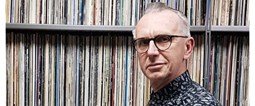
Foto © Leentje Arnouts
"WAGON JAZZ"
cycle d’interviews réalisées
par Georges Tonla Briquet

our partners:
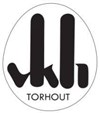


Hotel-Brasserie
Markt 2 - 8820 TORHOUT
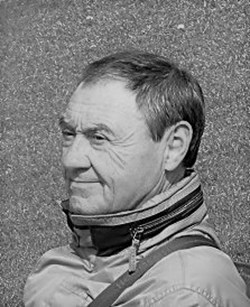
Silvère Mansis
(10.9.1944 - 22.4.2018)
foto © Dirck Brysse
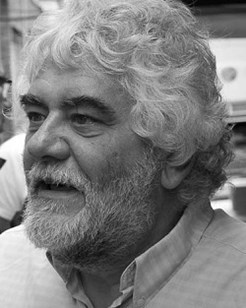
Rik Bevernage
(19.4.1954 - 6.3.2018)
foto © Stefe Jiroflée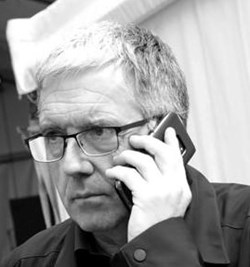
Philippe Schoonbrood
(24.5.1957-30.5.2020)
foto © Dominique Houcmant
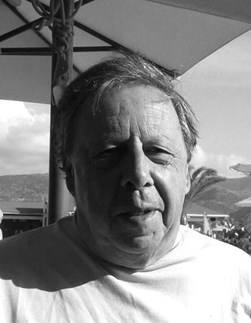
Claude Loxhay
(18.2.1947 – 2.11.2023)
foto © Marie Gilon
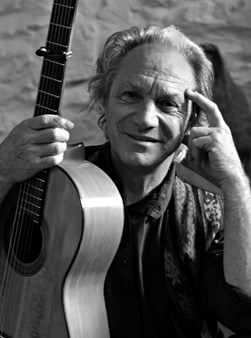
Pedro Soler
(8.6.1938 – 3.8.2024)
foto © Jacky Lepage
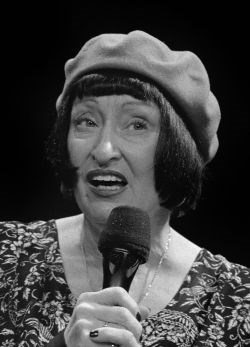
Sheila Jordan
(18.11.1928 – 11.8.2025)
foto © Jacky Lepage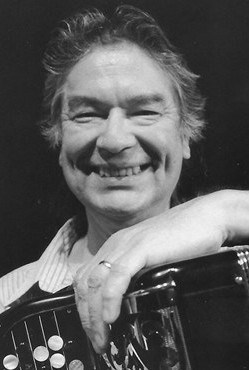
Raúl Barboza
(22.5.1938 - 27.8.2025)
foto © Jacky Lepage
Special thanks to our photographers:
Petra Beckers
Ron Beenen
Annie Boedt
Klaas Boelen
Henning Bolte
Serge Braem
Cedric Craps
Luca A. d'Agostino
Christian Deblanc
Philippe De Cleen
Paul De Cloedt
Cindy De Kuyper
Koen Deleu
Ferdinand Dupuis-Panther
Anne Fishburn
Federico Garcia
Jeroen Goddemaer
Robert Hansenne
Serge Heimlich
Dominique Houcmant
Stefe Jiroflée
Herman Klaassen
Philippe Klein
Jos L. Knaepen
Tom Leentjes
Hugo Lefèvre
Jacky Lepage
Olivier Lestoquoit
Eric Malfait
Simas Martinonis
Nina Contini Melis
Anne Panther
France Paquay
Francesca Patella
Quentin Perot
Jean-Jacques Pussiau
Arnold Reyngoudt
Jean Schoubs
Willy Schuyten
Frank Tafuri
Jean-Pierre Tillaert
Tom Vanbesien
Jef Vandebroek
Geert Vandepoele
Guy Van de Poel
Cees van de Ven
Donata van de Ven
Harry van Kesteren
Geert Vanoverschelde
Roger Vantilt
Patrick Van Vlerken
Marie-Anne Ver Eecke
Karine Vergauwen
Frank Verlinden
Jan Vernieuwe
Anders Vranken
Didier Wagner
and to our writers:
Mischa Andriessen
Robin Arends
Marleen Arnouts
Werner Barth
José Bedeur
Henning Bolte
Paul Braem
Erik Carrette
Danny De Bock
Denis Desassis
Pierre Dulieu
Ferdinand Dupuis-Panther
Federico Garcia
Paul Godderis
Stephen Godsall
Jean-Pierre Goffin
Claudy Jalet
Chris Joris
Bernard Lefèvre
Mathilde Löffler
Claude Loxhay
Ieva Pakalniškytė
Anne Panther
Etienne Payen
Quentin Perot
Jacques Prouvost
Renato Sclaunich
Yves « JB » Tassin
Herman te Loo
Eric Therer
Georges Tonla Briquet
Henri Vandenberghe
Peter Van De Vijvere
Iwein Van Malderen
Jan Van Stichel
Olivier Verhelst



